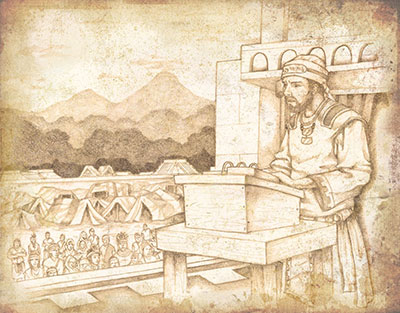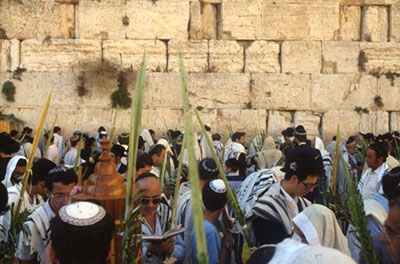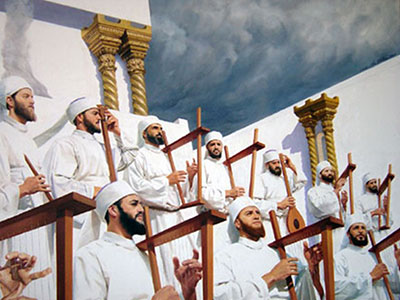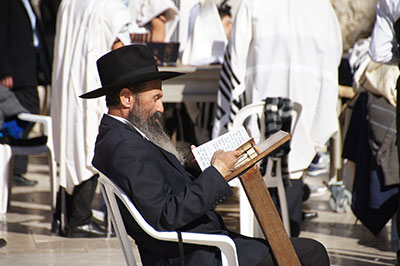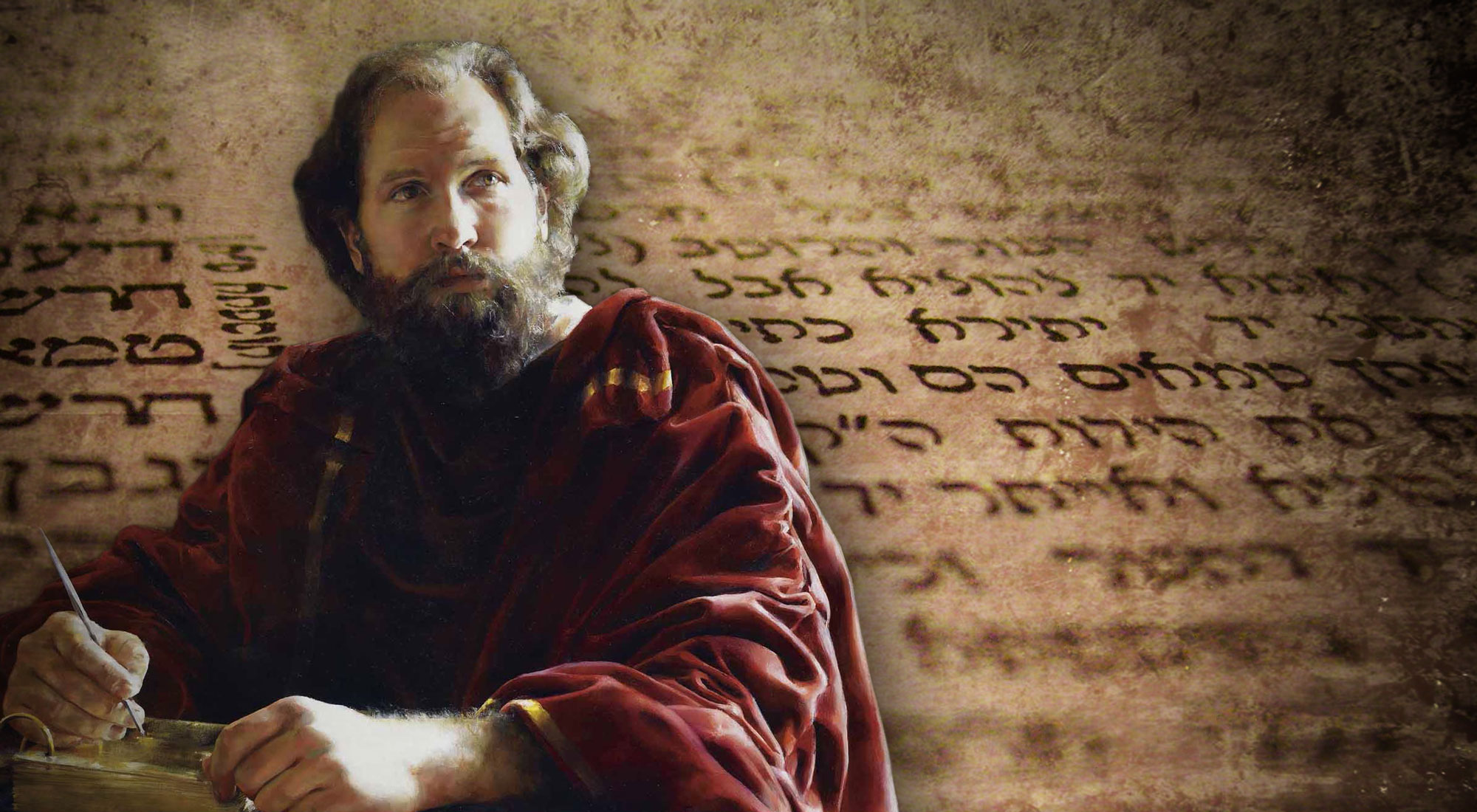
The Know
Quotations from and allusions to the Old Testament Psalms appear in four places in the book of Jacob. Jacob uses words and phrases from Psalms 95, 118, and 145, as demonstrated in this chart:
| Book of Jacob | Book of Psalms |
|---|---|
| Jacob 1:7 “that they might enter into his rest, lest by any means he should swear in his wrath they should not enter in, as in the provocation in the days of temptation while the children of Israel were in the wilderness” | Psalm 95:8, 11 “as in the provocation, and as in the day of temptation in the wilderness … Unto whom I sware in my wrath that they should not enter into my rest.” |
| Jacob 4:10 “in great mercy, over all his works” | Psalm 145:8–9 “of great mercy … and his tender mercies are over all his works.” |
| Jacob 4:15–17 “they will reject the stone upon which they might build … how is it possible that these, after having rejected the sure foundation, can ever build upon it, that it may become the head of their corner?” | Psalm 118:22 “The stone which the builders refused is become the head stone of the corner.” |
| Jacob 6:6 “Yea, today, if ye will hear his voice, harden not your hearts” | Psalm 95:7–8 “To day if ye will hear his voice, Harden not your heart” |
Nephi had consecrated Jacob as a temple priest and teacher (2 Nephi 5:26), and thus Jacob would have known and used psalms in his administration of temple rites and ordinances.1 Psalms 95, 118, and 145 are known especially for their use in ancient Israelite temple worship and later Jewish ritual.
Psalms scholar Hermann Gunkel described Psalm 95 as a temple hymn sung when worshippers journeyed to Jerusalem and sought “entry into the sanctuary.”2 The setting of Jacob’s discourse in Jacob 2–3 is explicitly stated to be the Nephite temple (Jacob 2:2). Psalm 95 is also cited in Alma 12 which, combined with chapter 13, similarly contains much temple imagery and references to the Melchizedek Priesthood.
Psalm 118 has long been understood as messianic and tied to the ancient Israelite Feast of Tabernacles,3 one of the ancient Israelite pilgrimage festivals at the Jerusalem temple. The psalm depicts the righteous passing through the temple gates in procession and circling around the altar of the temple. Jacob evidently understood Psalm 118 messianically and used it appropriately in a temple setting.
Psalm 145 has literary ties to Psalm 118, and many ritual elements related to the temple. Psalm 145 is part of Jewish religious ceremonies and is recited in the modern Jewish commemoration of Yom Kippur, the Day of Atonement. Appropriately, Jacob 4 also focuses on the atonement of Christ. It is significant that both Jacob 4 and Psalm 145 focus on themes such as “the name” of God (Jacob 4:5–6; Psalm 145:1–2, 21), “righteousness” (Jacob 4:5; Psalm 145:7), “grace” (Jacob 4:7; Psalm 145:7-9), and works/creation (Jacob 4:8; Psalm 145:5).
The Why
The Psalms have a long history of use in religious worship, particularly worship centered at the temple. That history would have been important to Jacob and his people. Pilgrims sang psalms on their way to the temple and as they entered its holy grounds. They were greeted by choruses that sang psalms on the temple steps. And likely, these holy hymns were sung or chanted as the ancient temple sacrifices and ordinances were performed. Anyone who participated in temple worship in an Israelite or Nephite temple would have known these Psalms and would have recognized them as an important part of the worship services.
The Psalms have often been called “the hymn book of the temple” because many of them appear to have been used in ancient Israelite temple worship or feature a temple setting and temple imagery.4 Thus, in his role as a consecrated teacher and priest who officiated in and taught at the temple, it is no surprise that Jacob employed language from psalms. A shorthand allusion to one part of a psalm would have effectively brought to mind all the rest of the words of that psalm.
Jacob very likely had access to at least some of the Psalms, either from the plates of brass or from memory. The Israelites, especially the priests and Levites, likely knew the Psalms and sang them regularly, similar to the way we know the hymns from our modern hymn books. Jacob worked as a priest in the Nephite temple and would, therefore, be expected to know the priestly traditions of the ancient Israelites. The fact that Jacob appropriately uses temple psalms for temple contexts underscores the reality that Jacob was culturally an ancient Israelite. More importantly, that he quotes from the Psalms demonstrates his familiarity and love for these scriptures.
As modern readers of Jacob’s words recognize these quotations from and allusions to the Old Testament Psalms in his text, they can better visualize the temple setting of many of his words. With this realization, Jacob’s status as the chief priest over the Nephite people gains further legitimacy and credibility. The consistency of the background narrative of Jacob’s priestly role in comparison to biblical temple priests supports the historicity and deep religiosity of the Book of Mormon.
Further Reading
John Hilton III, “Old Testament Psalms in the Book of Mormon,” in Ascending the Mountain of the Lord: Temple, Praise, and Worship in the Old Testament (2013 Sperry Symposium), ed. Jeffrey R. Chadwick, Matthew J. Grey, and David Rolph Seely (Salt Lake City and Provo, UT: Deseret Book and Religious Studies Center, Brigham Young University, 2013), 291–311.
David E. Bokovoy, “Ancient Temple Imagery in the Sermons of Jacob,” in Temple Insights: Proceedings of the Interpreter Matthew B. Brown Memorial Conference (The Temple on Mount Zion, 22 September 2012), eds. William J. Hamblin and David Rolph Seely (Orem, UT and Salt Lake City: The Interpreter Foundation and Eborn Books, 2014), 171–186.
- 1. On the use of the Psalms in the Temple of Jerusalem, see generally Dirk J. Human and Cas J. A. Vos, eds., Psalms and Liturgy (London: T&T Clark, 2004).
- 2. Hermann Gunkel, An Introduction to the Psalms: The Genres of the Religious Lyric of Israel, trans. James D. Nogalski (Macon, GA: Mercer University Press, 1998), 42.
- 3. Psalm 118 is the psalm most cited in the New Testament and is famously used in the Synoptic Gospels in the narrative of Jesus’ “triumphal entry” into Jerusalem. Compare this with the idea that Jacob preached to the Nephites at the temple during the Feast of Tabernacles. See Book of Mormon Central, “How is Jacob’s Speech Related to the Ancient Israelite Autumn Festivals (2 Nephi 6:4),” KnoWhy 32 (February 12, 2016).
- 4. See, for example, Psalms 5:7; 11:4; 18:6; 27:4; 48:9; 65:4; 68:29; and many others.
Continue reading at the original source →




